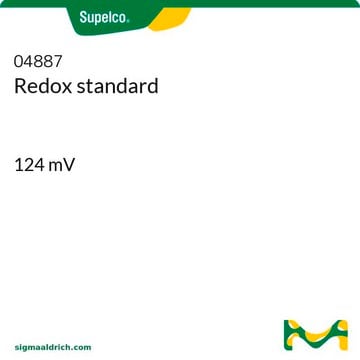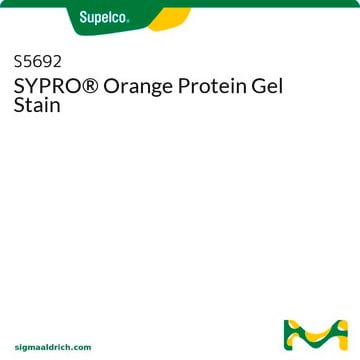Unfortunately, the stability of this product in solution has not been determined.
10417
8-Anilino-1-naphthalenesulfonic acid ammonium salt
for fluorescence, ≥97.0% (HPLC)
Sinônimo(s):
1,8-ANS NH4, ANSA, Ammonium 8-anilino-1-naphthalenesulfonate, N-Phenyl peri acid
Selecione um tamanho
Selecione um tamanho
About This Item
Produtos recomendados
grau
for fluorescence
Nível de qualidade
Ensaio
≥97.0% (HPLC)
Formulário
solid
perda
≤2.5% loss on drying
pf
245-253 °C
solubilidade
H2O: 0.1 g/5mL, clear to very slightly hazy (hot)
NaOH: 1 N
H2O: soluble
acetone: soluble
methanol: soluble
fluorescência
λex 388 nm; λem 470 nm in 0.1 M Tris, 0.2 M KCl, pH 9.0, BSA
adequação
suitable for fluorescence
cadeia de caracteres SMILES
N.OS(=O)(=O)c1cccc2cccc(Nc3ccccc3)c12
InChI
1S/C16H13NO3S.H3N/c18-21(19,20)15-11-5-7-12-6-4-10-14(16(12)15)17-13-8-2-1-3-9-13;/h1-11,17H,(H,18,19,20);1H3
chave InChI
IPBNQYLKHUNLQE-UHFFFAOYSA-N
Procurando produtos similares? Visita Guia de comparação de produtos
Aplicação
Código de classe de armazenamento
11 - Combustible Solids
Classe de risco de água (WGK)
WGK 3
Ponto de fulgor (°F)
Not applicable
Ponto de fulgor (°C)
Not applicable
Equipamento de proteção individual
dust mask type N95 (US), Eyeshields, Gloves
Escolha uma das versões mais recentes:
Já possui este produto?
Encontre a documentação dos produtos que você adquiriu recentemente na biblioteca de documentos.
Os clientes também visualizaram
Artigos
Nitric oxide (NO) as a signal transporter in neurons, endothelial cells and in the immune system.
-
How long does 8-Anilino-1-naphthalenesulfonic acid ammonium salt (product 10417-5G-F) remain stable after being dissolved in water, and at what temperature should this solution be stored?
1 answer-
Helpful?
-
Active Filters
Nossa equipe de cientistas tem experiência em todas as áreas de pesquisa, incluindo Life Sciences, ciência de materiais, síntese química, cromatografia, química analítica e muitas outras.
Entre em contato com a assistência técnica










